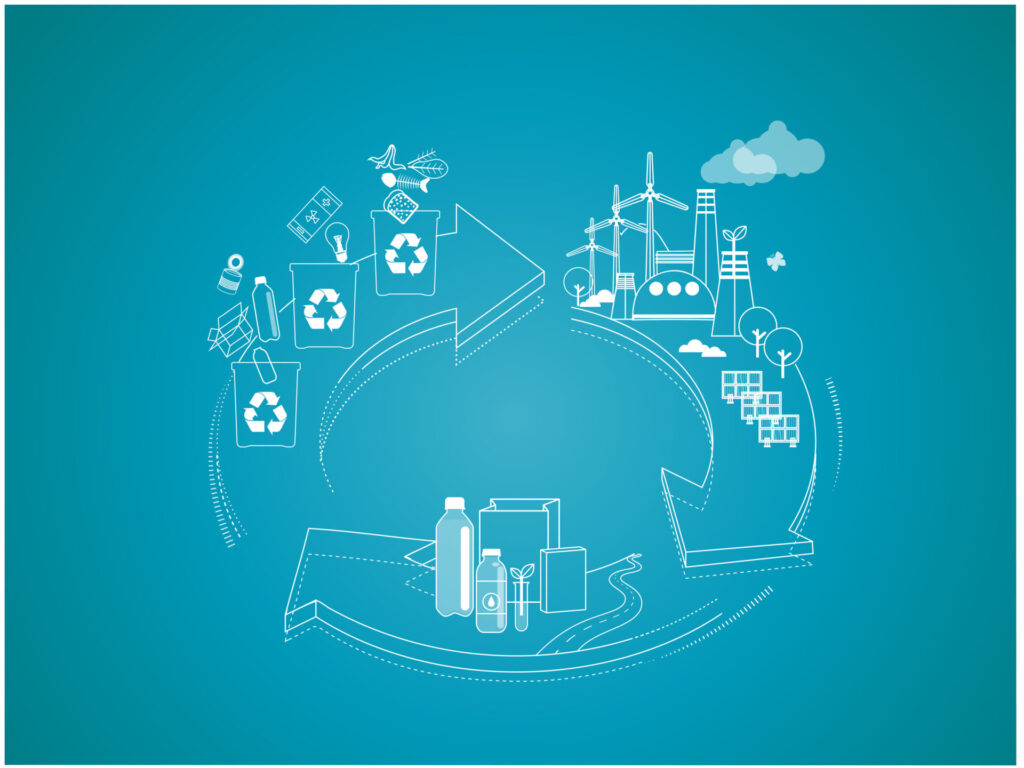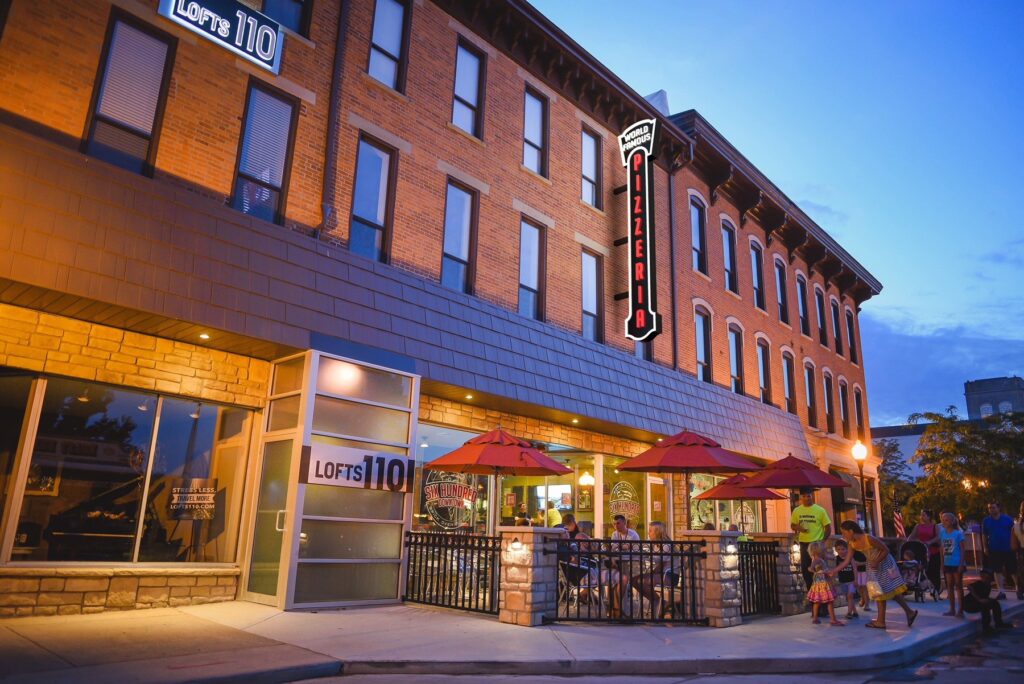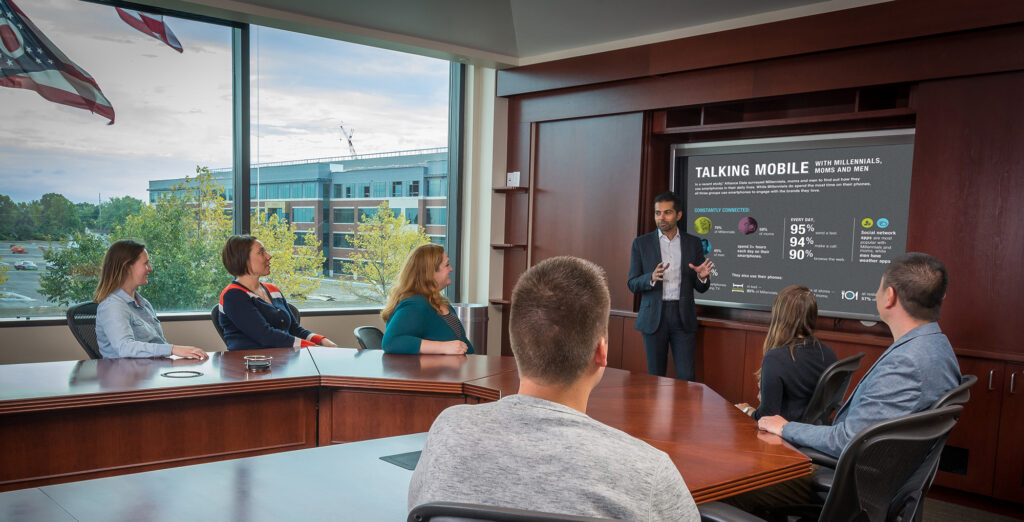Central Ohio is justifiably proud of what’s known as the “Columbus Way” — a culture of collaboration among businesses, governments, and communities that tends to encourage economic development beneficial to all. It makes sense, then, that the region also is home to a thriving circular economy — constellations of interdependent businesses that feed each other while making our society more sustainable.
It’s based on recycling, and at the center sits the Rumpke Recycling & Resource Center, a state-of-the-art materials recovery facility (MRF) that opened in August and is the nation’s largest and most advanced such operation. With a 32,000-square-foot tipping floor and innovative technology such as optical scanners and ballistic separators, the plant takes in the milk jugs, soda cans, yogurt cups, cardboard boxes, junk mail, and steel and aluminum castoffs of households and businesses in more than 50 Ohio counties and sorts them at a rate of 1,000 pieces per minute.
Within a matter of hours, those bits become parts of Rumpke’s end product: large bales of clean, sorted materials including plastic (clear and colored), metal, cardboard, mixed paper and others, on their way to companies that will handle the next step in the process of turning them into new products.
Elsewhere around the region, other dynamic, growing companies are ready to take those materials and utilize them to make their products in new and more sustainable ways. Axium, a manufacturer of containers and packaging for consumer products, buys many of those bales of milk jugs, which will become clear plastic bottles and jars. Axium has been headquartered in New Albany since 2010 with much of its business initially coming from a single consumer packaged goods (CPG) retailer. It has grown to become one of the largest consumer packaging manufacturers in North America. To ensure the highest quality of plastic material, in 2022 Axium stood up Vertix, a state-of-the-art recycling facility also in New Albany, to process those milk jugs from the Rumpke plant into plastic resin for use by Axium and a growing roster of other customers.
Advanced Drainage Systems (ADS), a Hilliard-based industry leader in water management solutions, turns high-density polyethylene (HDPE), such as colored detergent jugs, into plastic drainage pipe that can have a service life of up to a century. (And if and when it does need replaced, it can be ground up and used again.) Delaware-based Greif, a maker of industrial packaging products, takes a large portion of the paper and cardboard.
As a circular-economy player, Rumpke is a manufacturer with no inventory; most of the bales it produces go out the door by day’s end.
The location and operations of the mega-MRF aren’t arbitrary, says Andrew Rumpke, president of the 90-year-old, family-owned company. “When we looked at developing this facility, we knew we had great partners in Columbus,” he said. While always researching new recycling technologies and potential new markets, the company won’t commit to collecting or selling a type of material until the end market is established.
“It’s important to us to uphold our commitments, so we’re looking for long-term, stable markets,” Rumpke said. “We want people to trust that what they put into their recycling bin is actually going to get turned into a new product.”
The good news for the ordinary consumers who toss things into their home carts and bins every week is that the capability keeps increasing. Items that were once nonrecyclable in central Ohio, such as polypropylene (think yogurt and butter tubs) and greasy pizza boxes, are now OK through Rumpke because manufacturers have developed ways to use the material output. And earlier this month, the company announced that new sorting technology now allows it to accept another formerly banned category: clear-plastic clamshell containers like those for berries, eggs, and take-out food (as long as they’re clear plastic).
The success of central Ohio’s recycling-related companies naturally breeds demand for more recycled material, and the leading players work together on increasing the supply. ADS is one of 80-some companies that joined the Recycling Partnership, a national industry-funded nonprofit “actively involved in lobbying for increased access to recycling,” said Brian King, ADS executive vice president for product management and marketing. The company collaborates with Rumpke and the Solid Waste Authority of Central Ohio on public education and through Ohio State University’s Sustainability Institute.
ADS recently announced the opening of a 100,000-square-foot Engineering and Technology Center in Hilliard. It’s the world’s most advanced center for stormwater research and will be critical for developing new material science and engineering technology to support the increased use of recycled materials. Locating the facility in central Ohio both confirms and enhances the region’s status as a circular economy leader. Decisions by the city of Columbus, such as starting curbside recycling in 2012 and more recently doubling collection frequency to every week, also help nurture the sustainability ecosystem.
Right now, the players share the goal of increasing the amount of plastic collected for recycling, King said. ADS already consumes one-third of all the HDPE bottles recycled in the U.S. and the company’s 10-year sustainability goal calls for doubling its annual recycling volume from 500 million pounds to 1 billion pounds.
There’s room for improvement; 40% of households nationwide, particularly in multifamily homes and in rural areas, aren’t served by curbside recycling, according to King. Rumpke sees the same in Franklin County, saying, “A lot of recyclable material is still going to the landfill. That’s really the place to get higher recycling volumes.”
And as that stream grows, Rumpke is ready with the capacity to turn it into clean bales, with plenty of partners standing by to turn those into new products — on store shelves, underground, in the cardboard box holding your front-porch delivery and wherever else recycling technology leads us.
Sidebar: Rumpke’s mega-recycling center is also about educating the public.
Rumpke Waste & Recycling, a family-owned business with 90 years of history, knows that building the circular economy depends on getting more people to recycle, and that in turn depends on making it easy and convincing them of its value. So, when the company designed its $106 million materials recovery facility (MRF) in Columbus, it went all in on education.
A 3,000-square-foot Education Center, which has a full view of the sorting floor 45 feet below, includes a grocery store simulation. Guests choose items from shelves and scan them on a mock cash register to get points (or not) based on whether the items are recyclable.
Ohio State University and the Center of Science and Industry (COSI) worked with Rumpke to design displays, including interactive exhibits, illustrating a material’s journey through the recycling process.
A detailed tabletop model of the plant, linked to interactive videos, provides a virtual tour of the plant for guests who aren’t able to walk the elevated touring catwalk inside the sorting area.
Tours are available for groups of 10 to 30 people ages 10 and up. Wheelchair and mobility assistance is available, and tours are requested by searching “Facility Tours” at rumpke.com.
“We have given tours of the facility to many organizations and business leaders since the facility’s opening in August 2024,” company President Andrew Rumpke said. “We are excited to start welcoming school groups and others. We want people in here every day!”


